Hub Centric vs. Lug Centric
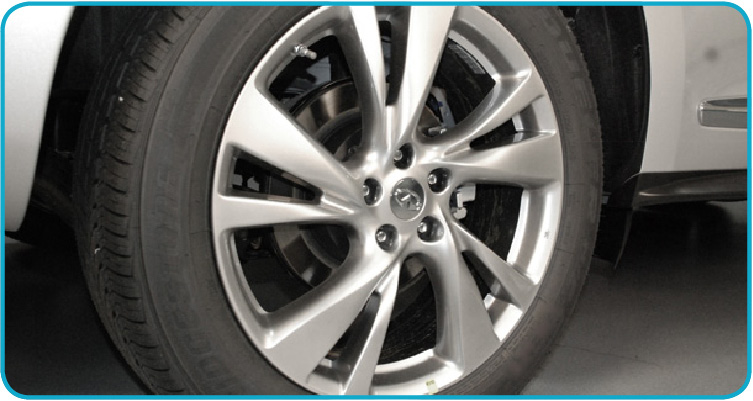
Hub centric wheels are manufactured so that when they are installed on the vehicle, the wheel is located directly off of the center flange of the hub. In other words, the wheel is centered up by contact of its center bore with the hub pilot’s center flange. This results in a true, snug fit. Most factory wheels are hub-centric (with the exception of Nissan), so their lug nuts have a flat seating surface. The possibility of shifting while being mounted is minimized by how they precisely fit on the hub. This also helps to prevent them from shifting around at high-speeds or when hitting bumps.
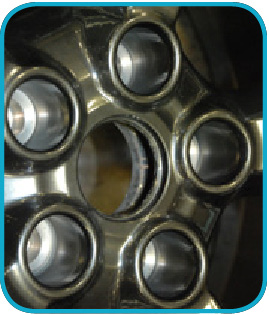
“Lug-centric” or ‘non’ hub centric wheels have larger diameter hub center bore openings than the vehicle’s hub pilot. Most aftermarket wheels are lugcentric with their center bores designed large enough to fit a variety of vehicles. The lug holes on the wheels are drilled to have an angled seating service (60 deg), so the lug nuts have this same conical angled design. Fitting into this seating is how lug nuts pull the wheel/tire assembly into concentricity and are therefore called lug-centric. The wheels are located solely by the lug nuts rather than the wheel hub. As the lug nuts are tightened, they adjust the wheel’s position relative to the hub, thus centering the wheel.
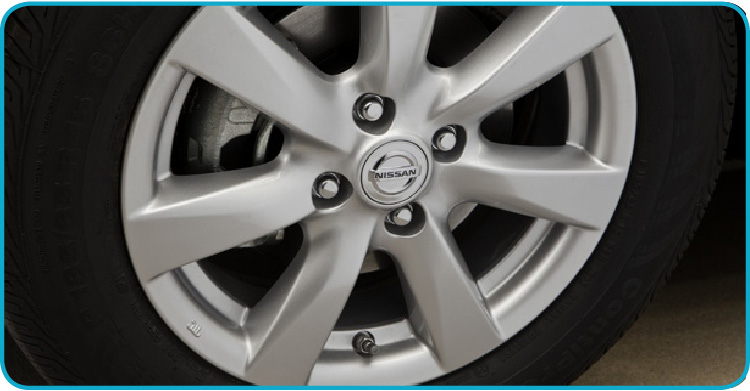
Assuming that the lug nuts are tapered to fit in the countersunk holes in the wheels, it is critical to first “finger tighten” the wheel lugs. Lower the vehicle so only enough weight is put on the wheel/tire to keep it from turning when torquing lug nuts, without the weight of the vehicle pushing them off center. Once done, lower the vehicle all the way so the lug nuts can be torqued to specification with the vehicle on the ground. Properly torquing the lug nuts will help keep the wheel centered as the vehicle is driven.
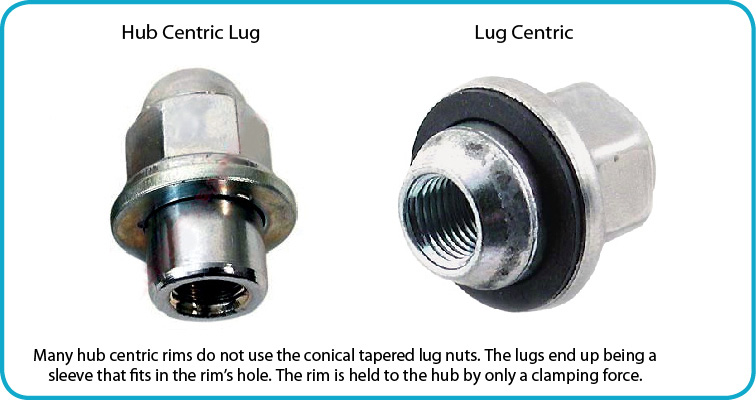
Hub Centric Rings
If a vehicle is equipped with aftermarket wheels, you rely on adapter rings (hub centric rings) to increase the size of the hub. Using a hub-centric ring will help allow the wheel to be centered as soon as you mount it (like factory wheels), so you’re not just relying on the lug nuts to “self center” the wheel. With the rings installed the aftermarket wheels are now HUB *AND* LUG-centric. Hub centric rings, typically made of plastic and steel are designed to fill the gap between the hub pilot of the vehicle and the wheel center bore. Once the wheel assembly is torqued, these rings are intended to convert the wheel/hub to the more desirable hub centric set-up. A hub centric ring is basically a reducer bushing whose sole purpose is to help align and center the wheel and pull the wheel/tire assembly into concentricity.
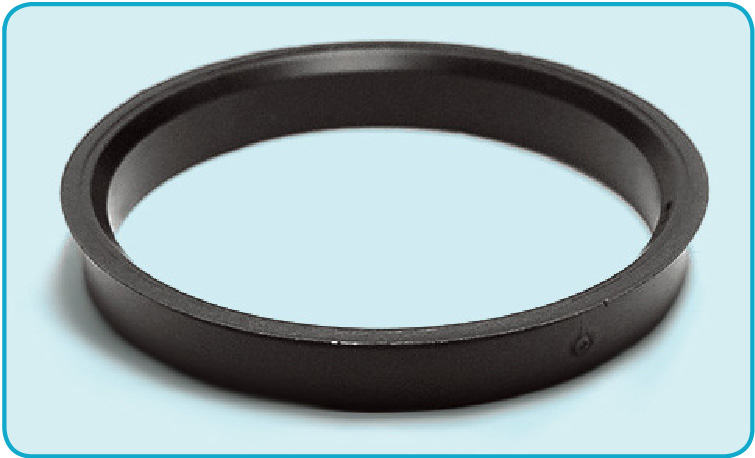
Hub rings help to reduce and can eliminate wheel and tire vibration conditions that are caused by wheel mount installation. Not utilizing a hub-ring means you are lug-centric and solely utilizing the lugs to center the wheels instead of the lugs and the hub.
Center Bore
A wheel’s center bore is the machined opening on the back that properly centers the wheel to the hub pilot. This hole is machined to exactly match the hub so the wheels are precisely positioned as the lug hardware is torqued down. Keeping the wheel precisely centered on the hub when it is mounted will minimize the chance of a vibration. Some wheels are vehicle model specific and will come from the factory with a bore machined to match that vehicle. Some wheels are designed to fit multiple vehicle models and will use a centering ring system to reduce the bore size to match the hubs of different vehicles. Hub centric rings (supplied with aftermarket wheels), designed to center the wheel to the hub pilot, will not offer any sort of structural integrity to the wheel itself. Their only purpose is to position the wheel precisely as the lug nuts are torqued to specification.
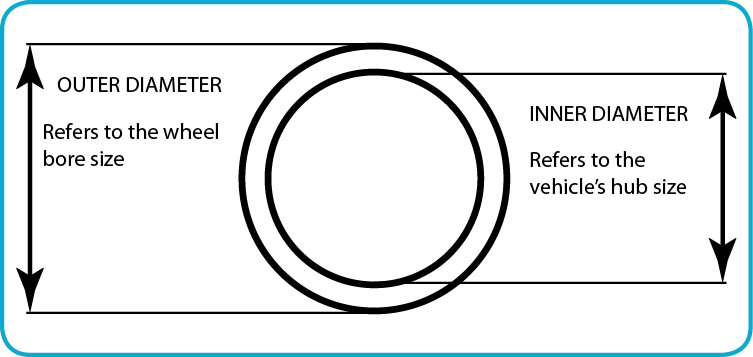
While many aftermarket alloy wheels are designed to use your car’s original lug nuts or bolts, others require new hardware. It may be something as critical as differences in the wheel’s lug seat design or something as simple as shorter lug heads to allow the wheel’s center caps to fit. If the customer’s aftermarket wheels required hardware. Reference the applicable parts size, pitch, seat design, total length and the appropriate lug wrench socket size.
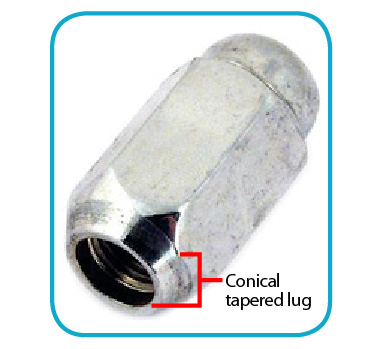
Note: If a customer has aftermarket wheels installed on their vehicle, tell them to keep a set of your vehicle’s Original Equipment lug nuts or bolts in the trunk just in case they ever need to use their factory spare tire, which must always be installed with the Original Equipment lug hardware.
Proper installation requires that the wheel lug torque always be set to the recommended specification for your vehicle. These torque specifications can be found in the vehicle’s owner’s manual, shop repair manual, or applicable ESM.
![]()
Caution: Over tightening wheel lug nuts without the use of a torque wrench may warp a rotor or strip the stud threads.
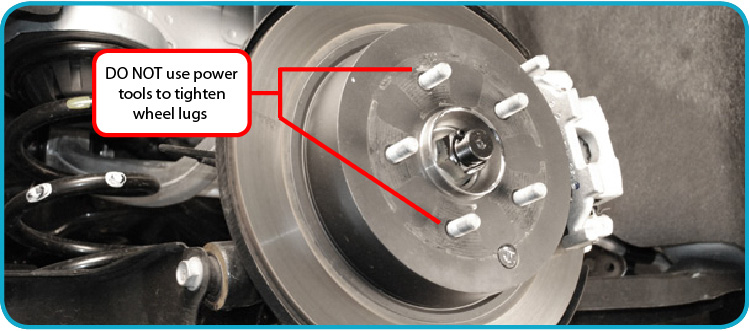
Wheel lug torque specifications work best with clean threads that are free of dirt, debris, etc. Lug-centric wheels require extra care in mounting on a vehicle. When using shouldered nuts instead of tapered nuts, take extra care to properly locate the wheel. Never use air tools to install high performance wheels! Always use a torque wrench and follow accepted tightening procedures.
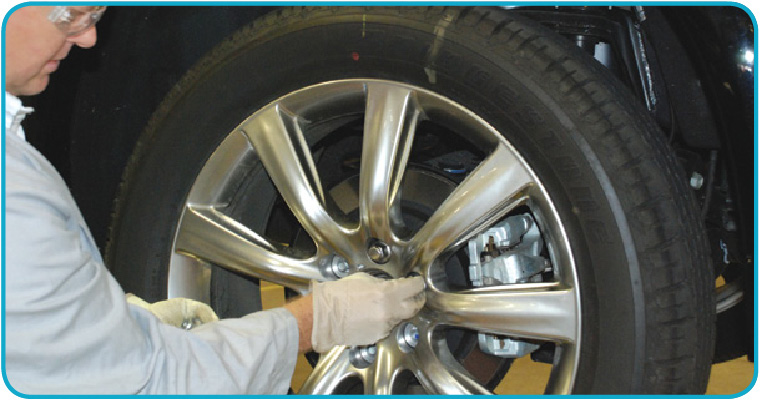
A thread chaser or tap should be used to remove any burrs or obstructions when lug hardware cannot be easily installed and seated by hand. Once you have snuggly hand-tightened lugs down, finish tightening them with an accurate torque wrench. Use the appropriate star pattern (crisscross sequence) for the number of wheel lugs on your vehicle until all have reached their proper torque value. Be careful because if you over-torque a wheel, you can strip a lug nut or hub, stretch or break a stud or bolt, or cause the wheel, brake rotor and/or brake drum to distort.
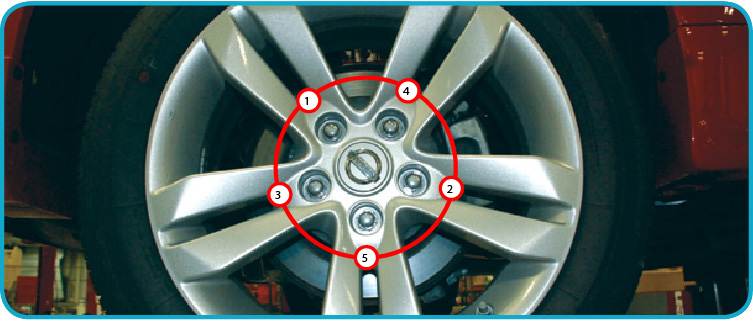
Use the dry wheel lug torque values specified in the vehicle’s owner’s manual, or refer to the applicable ESM. The chart lists typical torque values that should only be used temporarily until the vehicles exact torque values can be confirmed.
Note: Lubricating the studs or lug nuts with an anti-seize lubricant (even WD40), changes the torque characteristics enough that the wheel may be under torqued or over torqued.
Be aware that the thickness of an aftermarket alloy wheel can differ from Original Equipment wheels, verify that the lug nuts or bolts will engage the threads correctly to tighten to specification. Refer to the chart below to determine the number of turns or the depth of engagement typical for your stud or bolt size.
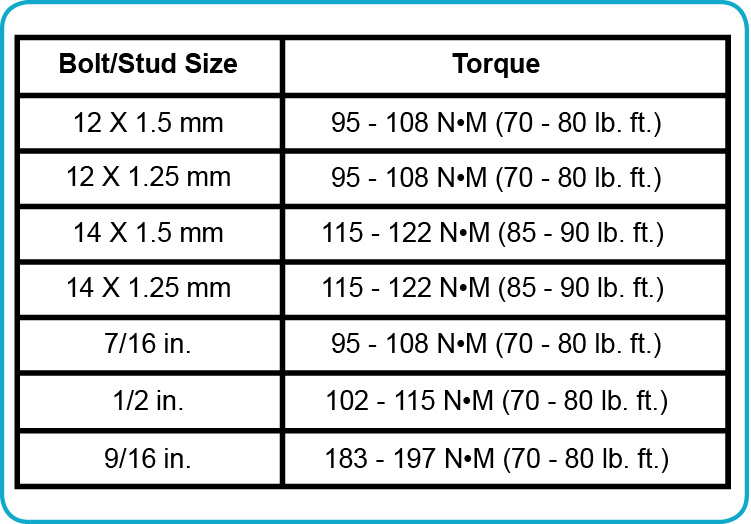
![]()
Caution: Always use a torque wrench and follow accepted tightening procedures. Use the appropriate star pattern (crisscross sequence) for the number of wheel lugs on the wheel until all have reached their proper torque value.
When installing new wheels you should re-torque the wheel lugs after driving the first 50 to 100 miles in case the clamping loads have changed following the initial installation. This is necessary due to the possibility of metal compression/elongation or thermal stresses affecting the wheels as they are breaking in, as well as to verify the accuracy of the original installation. When rechecking torque value, wait for the wheels to cool to ambient temperature (never torque a hot wheel). Loosen and retighten to value, in sequence. Simply repeat the same torque procedure.
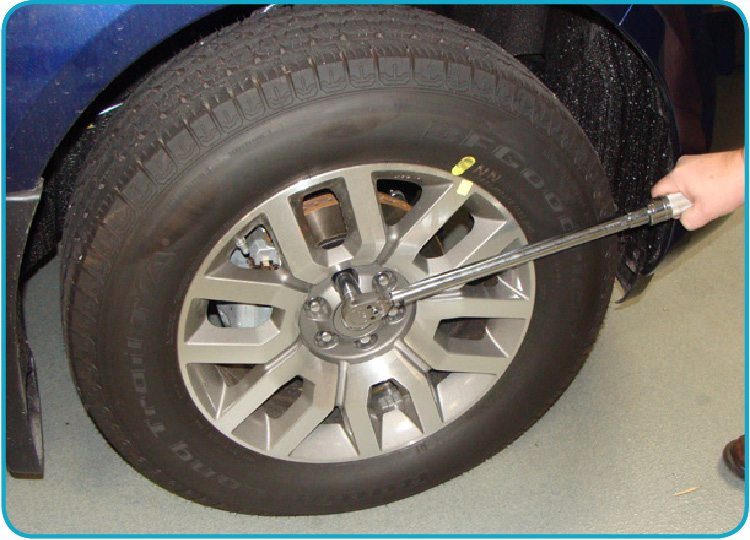
Remember, what actually holds a wheel on the vehicle is force friction that is created once the lug nuts are torqued to specifications set for the vehicle.